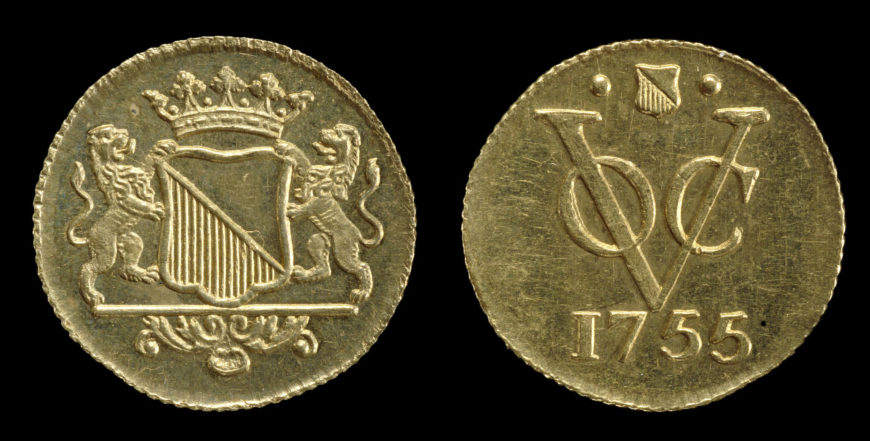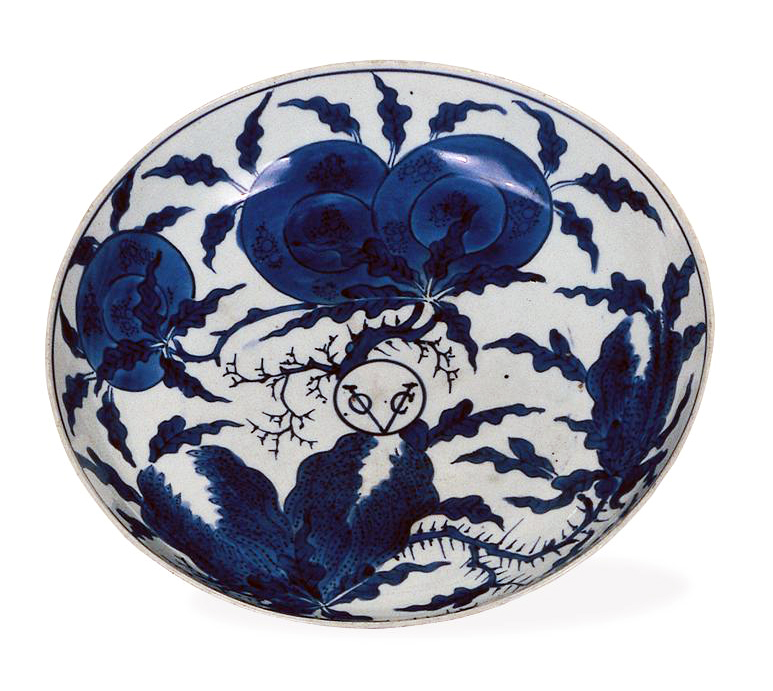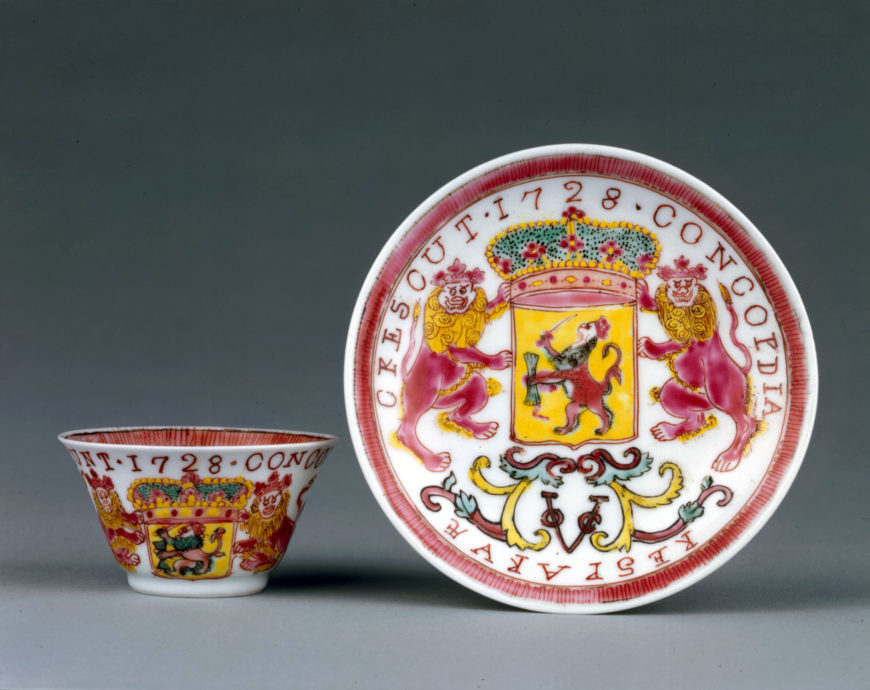
Gold duit of the Dutch East India Company, 1755, Dutch East Indies (Indonesia), 23 mm in diameter (© The Trustees of the British Museum)
For use in colonial trade between the Netherlands and its dominions
By the seventeenth century the Netherlands had become a prosperous country through its shipping trade across Europe and its trade links with Asia. The United Dutch East India Company (Vereenigde Oostindische Compagnie) was formed in 1602 in order to unite various small trade companies which had created commercial links with the India and East Asia during the late sixteenth century. With bases in Sri Lanka, India and Indonesia, the Company became a powerful trade organization. It was even given powers of rule over its dominions, along similar lines to those of the English East India Company. Like its British rival, the Dutch East India Company issued coins for trade in its dominions. The coin bears the Company’s monogram (VOC) and the date.
Gold ducats were first struck in Venice in the thirteenth century and, such was the success of the coin, continued to be produced until the end of the eighteenth century. It became the standard European gold coin, and many rulers produced their own coins to a similar weight and fineness.

Arita ware porcelain dish, Edo period, 17th century, from Japan, 34.29 cm in diameter (© The Trustees of the British Museum)
With the mark of the Dutch East India Company
This dish was commissioned by the United Dutch East India Company and bears their V.O.C. mark (Vereenigde Oostindische Compagnie). From the end of the sixteenth century the Dutch East India Company developed a vast network of trading posts through South-east Asia. They monopolized European trade with Japan from about 1641, when, for political reasons, the Tokugawa Shogunate restricted foreign contacts by law. The Dutch ‘factory’ was on the tiny island of Deshima in Nagasaki Bay. The Chinese were the only other foreigners allowed to trade with Japan, but even their activities were restricted by political upheaval at home with the fall of the Ming dynasty in 1644. The Dutch brought in mainly raw silk and sugar and took out gold, silver and copper. However as time went on demand also grew for Japanese porcelain.
This dish was for the use of the Company’s officers in Japan. The commissioners also specified the Chinese-style design of auspicious peaches and the ‘Buddha’s fingers’ plant. Judging from the great depth of the transparent glaze and the five spur marks on the base the dish was made between 1690 and 1700 at a time of great technological advance in porcelain manufacture.

Famille rose teacup and saucer, Qing dynasty, about 1729–30, from Jingdezhen, Jiangxi province, southern China (© The Trustees of the British Museum)
Porcelain with a coat of arms
The design on this teacup and saucer is composed of a crowned coat of arms supported by two crowned lions, below which is the monogram VOC. The arms and motto belong to the Dutch Republic. The VOC monogram is that of the Dutch East India Company (Vereenigde Oostindische Compagnie), which was hugely important to Asian trade with Europe at this time. So important, in fact, that the company issued its own coinage for use in the Far East.
Encircling the design is the date 1728 and the Latin motto CONCORDIA RES PARVAE CRESCUNT (‘Small things grow great in unity’). The design on the cup and saucer has been accurately copied from one side of a silver coin struck in 1728. The pieces are good examples of the fine porcelains decorated in the bright colors of the pallette.
© The Trustees of the British Museum
R. Krahl and J. Harrison-Hall, Ancient Chinese trade ceramics (National Museum of History, ROC, 1994)
S.J. Vainker, Chinese pottery and porcelain, (London, The British Museum Press, 1991)
L. Smith, V. Harris and T. Clark, Japanese art: masterpieces in (London, The British Museum Press, 1990)

